If you're new here, you may want to subscribe to my RSS feed. Thanks for visiting!
Author of The Dark Secrets of SHTF Survival and the online course SHTF Survival Boot Camp
Editor’s Note: Did you ever wish you could drop everything and fly over to the Balkans to be trained in urban survival by Selco? Wouldn’t it be great to be able to pick his brain and have him beside you as you learned to deal with an SHTF scenario? Well, here’s the next best thing. Selco recently finished teaching a hardcore 5-day course in Croatia. With 6 students, they went through high-stress exercises and learned about living through an all-out disaster where danger lurks around every corner. Selco has generously agreed to write a series for us so that we can learn from him. It’s not quite like being there, but it’s the next best thing. ~ Daisy
What to Pack for a 5-Day Urban Survival Course
We have just finished our flagship Urban survival course in Croatia.
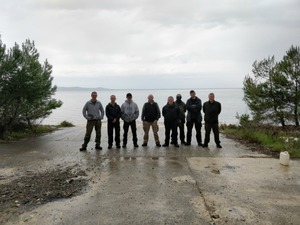
For me, the most important thing was to give them a piece of the mindset needed for a real SHTF event and to give them a clear starting point from where they can build more skills, knowledge, and competence.
In some moments it was hard for them, both physically and mentally, but one of the most important points, of course, was to test them in not so perfect conditions.
The whole course cannot be transferred here for reading, but some highlights can be given in a series of articles, reflecting on the most interesting moments of each day. This time, we will start out with the gear necessary for the class.
Equipment (items that you have with you)
I am a very big fan of carrying items that are multipurpose, and I have adopted over the time the philosophy that “less is more.” In reality,”more skills-less items” is the key to survival. That said, I am aware that we will have many items in our backpack when we talk about urban survival.
Because there is a big chance the items that you carry are gonna be used when you are in a hurry, in danger, in the dark, or simply when you are very tired, those things need to be organized in a practical way.
Add to that fact, there is a chance that sometimes you’ll be in a situation to lose (or throw away) your backpack, then it makes more sense to organize it.
The whole philosophy of having one bag (or backpack) that have “all that you need inside” is kinda wrong if ALL important items are inside.
It is essential to think about “layers” of equipment.
Everything that you carry with you must have a clear role in your survival, otherwise, it should not be in your backpack (or on you) so think about the “comfort vs. necessity” philosophy.
It is very good to have many items, but it is not so cool to go through a tough situation with 50 kg backpack on your back, so choose carefully what you gonna have.
You should organize it in layers.
Let’s take the “fire” category, for example. In the first layer you could have small fire starter around your neck, the second layer is lighters or matches in your waist bag or pocket, the third layer is fuel cubes or whatever other fire help you have in your backpack.
For the food category, you may have power bars in your pocket and then in your backpack, you may have food that is more adequate or “serious”.
It is easy to follow this logic and organize other equipment in the same way. Sometimes you do not need (or you can not have) 3 layers. Sometimes only 2 layers are possible.
It is important to understand that you need to have layers so you maximize your chances for success when you lose equipment, for example, while running away from some danger and throwing away your backpack.
[page_section template=’3′ position=’default’ shadow=’#dd9933′]
Have you taken Selco’s online courses yet?
Taking the online courses are the next best thing to getting over to Europe and studying with him personally.
- SHTF Survival Boot Camp teaches you both urban and wilderness survival skills, primitive first aid, and lessons on violence that you’ll never forget.
- One Year in Hell is Selco’s original course that shares the dark truth about what it was like to live in a city under siege. He talks about the signs he missed, what happened when chaos erupted, the grim sanitation conditions, and how his life completely changed.
If you want the real deal from a legend who has lived through the SHTF, these are the online courses for you.[/page_section]
First aid kits
The best example of what often goes wrong with buying, packaging and carrying items are first aid kits.
There are many reasons for that. A few are:
- People buying “pre-made” first aid kits with useless things inside
- No knowledge of how to use items in the first aid kit
- No knowledge of what is really needed to have in a medical emergency and what not to have
So as a result, a lot of people have their first aid kit buried deep inside their backpack, or some of them having their first aid kit on a belt but inside they have painkillers, antidiarrheal medicines, a few plasters (band-aids) and nothing more.
I agree that plasters, antidiarrheal medicines, and painkillers may have a place in your first aid kits but use common sense and think about:
- what is really important and can make a difference in seconds or minute
- what needs to be available all the time, and in an easy and fast to access way
Again, think in layers.
So, of course, you can have antidiarrheal medicines, plasters, painkillers, and hand sanitizers but in your first layer (available immediately) need to be items that can save a life in a matter of minutes, for example, shears, field dressing, bandages, tourniquets, and similar.
If you got a headache you will not die if you do not take a painkiller in a few minutes, but if you get serious wound it may be different if you do not act fast and have the means to treat it immediately.
The best way is to package your own kit, based on your circumstances and your needs. But be sure that you know about every item inside, how it works, and try to test it in the best possible way.
In the photo above, there are two bandages. Each of those bandages was packaged, and for an average man both are just bandages: they look the same and they are supposed to do the same job.
Actually, the bandage in my right hand can do the job like 3 bandages in the left hand, because of the quality, elasticity, texture, and density. Just test everything or you never know what you have until you really need it, and then it might be wrong.
If somebody told you, for example. that you need to have scissors (or shears) in your first aid kit (and he is right) then be sure to test quality of that item because you may find out that in the prepackaged kit you have something that can not do the job needed even for a sewing kit, not to mention working with heavy fabric to treat a wound.
A small difference like having paper medical tape or heavy-duty tape can mean a lot if you are doing something important like treating a wound in a rain-soaked environment.
Clothes
Over time I have started to believe that the word “tactical” has become one of the worst enemies in common sense prepping/survival today.
We have tactical caps, tactical boots, pants, stickers, and whatnot.
People start to believe that by buying an item that is “tactical” (or manufacturer states it is) they are solving huge problems in their survival.
In reality, a lot of the items that are “tactical” are actually produced to look nice and cool, but have many flaws that are not so tactical.
For example, if you have tactical camo urban survival jackets that make you stick out so bad in an urban setting, there is nothing tactical about that.
Or there are survival tactical pants that have cool pockets for your stuff and look really cool. But when you walk they produce a hissing sound (because of the fabric) that on a calm night and “tactical” situation can be heard 100 meters away.
Or urban survival tactical bags and pouches with cool fluorescent emblems on it that makes you shine so cool in the dark, but also make you visible when you maybe don’t want to be seen.
Being seen and heard from a distance makes sense in some survival situations, but in others, it is completely undesirable and dangerous. Choose your clothes based on that, not based on how “tactical” they are, or how cool they look.
About Selco:
Selco survived the Balkan war of the 90s in a city under siege, without electricity, running water, or food distribution. He is currently accepting students for his next physical course here.
In his online works, he gives an inside view of the reality of survival under the harshest conditions. He reviews what works and what doesn’t, tells you the hard lessons he learned, and shares how he prepares today.
He never stopped learning about survival and preparedness since the war. Regardless of what happens, chances are you will never experience extreme situations as Selco did. But you have the chance to learn from him and how he faced death for months.
- Read more of Selco’s articles here.
- Buy his PDF books here.
- Buy his #1 New Release paperback, The Dark Secrets of Survival here.
- Take advantage of a deep and profound insight into his knowledge by signing up for his online course SHTF Survival Boot Camp.
- Learn the inside story of what it was really like when the SHTF with his online course One Year in Hell.
Real survival is not romantic or idealistic. It is brutal, hard and unfair. Let Selco take you into that world.

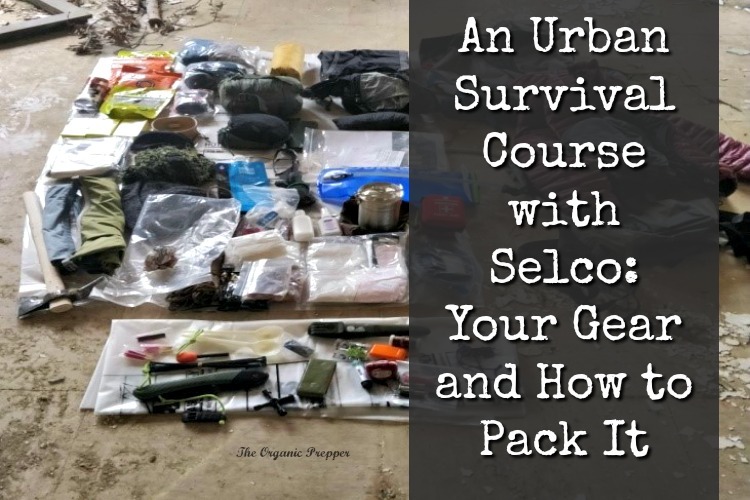
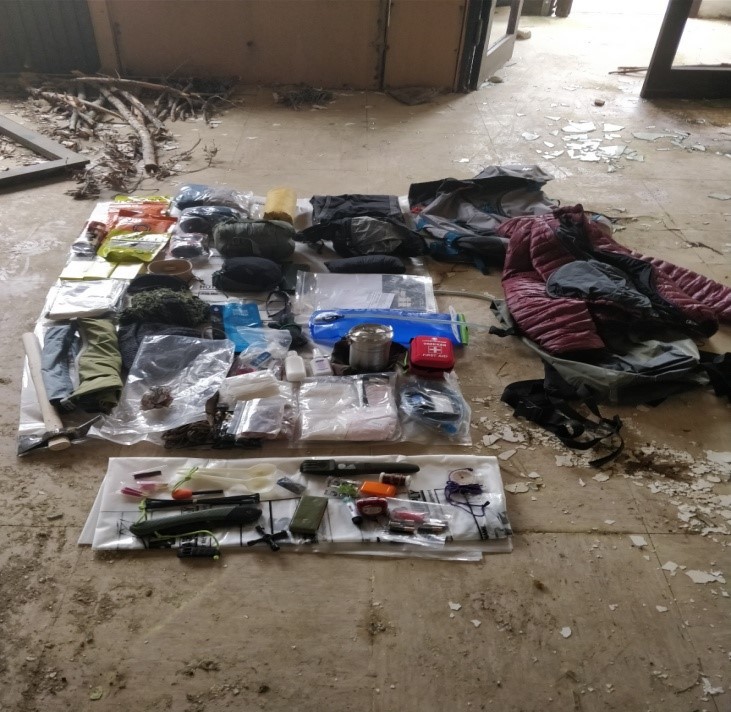
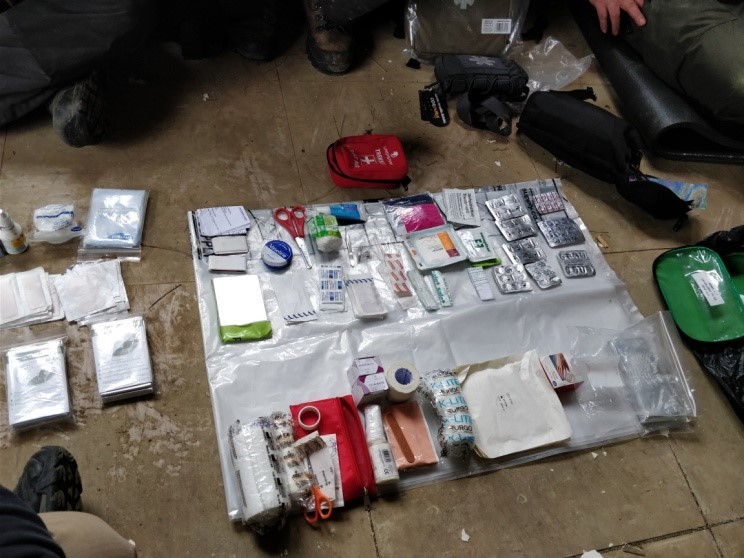
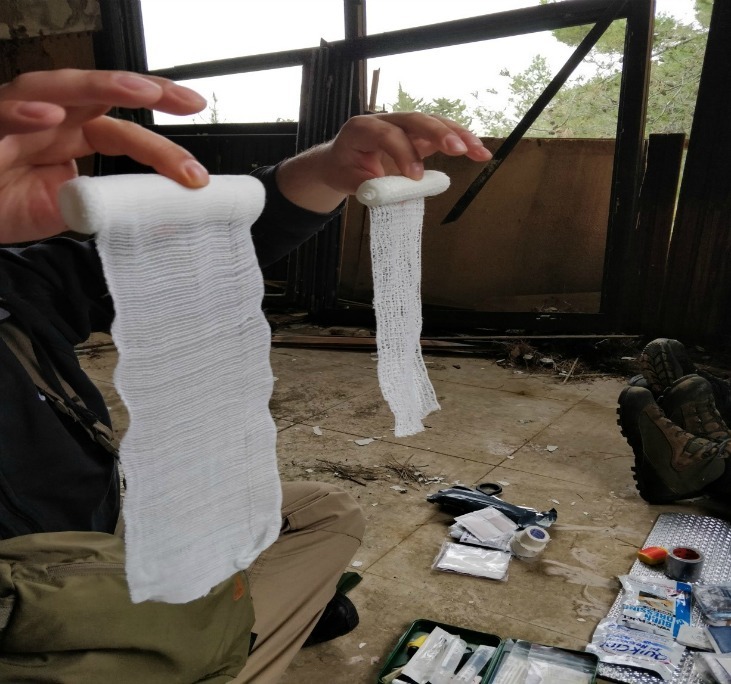














15 Responses
What no GUN ??????
With Wolves in all most every state (thanks the NWO trying to keep us from living off the land),bears,badgers,Mountain Lions and God forbid you should happen upon a Wolverine and 2 legged predators legal and illegal. It is not only wise but prudent to carry some type of weapon.
Recommendation 22mag https://www.keltecweapons.com/pistols/pmr-30 and or https://www.keltecweapons.com/rifles/cmr-30 both would be best. Same mags,everything but barrel. Extremely accurate,light weight (PMR 30 13oz fully loaded same weight as fully loaded AR-15 MAGAZINE) and from what I hear from friends whom followed my advice – fun to shoot. I don’t even own one(would love to have 1 or both – any benefactors out there? Retired,fixed income) or work for the Kel-Tec. Many friends have redone their BOB for this weapon because it’s so light,easy to carry and almost no recoil; women love it more than guys for this reason alone.
6 mags = 180 rds of kick ass power.
John
Thanks John.
Article is written based on gear that students brought on course.
No guns are allowed in Croatia on course.
Also main focus of article is to discuss mindset in chosing and carryng items not necessary all items.
I do agree that guns are absolutely must have items in prepping philosophy.
Selco
“180 rds of kick ass power.”
.22WMR?
That would be comical if you did not actually believe it.
Per the late, great COL Jeff Copper, what most people need is a “The general purpose rifle will do equally well for all but specialized hunting, as well as for fighting; thus it must be powerful enough to kill any living target of reasonable size.”
That would include most game in North America.
Do not talk to me about how shot placement is critical. I raise hogs. I put them down with a .22LR. I know all about shot placement.
Equally I can tell you when it comes down to a well placed shot and field conditions, the two are not equal. You want a rifle that will go bang and not click every time, with a caliber that will put that animal down, right there, every time.
Gimmick firearms need not apply.
Per the late, great, COL Jeff Cooper’s recommendation, a scout rifle in .308WIN will serve most people, especially if they are true riflemen, experts at the fundamentals of marksmenship, and not some bunker bunnies.
Thanks for posting this! I’m eagerly awaiting the next installment. Selco makes a great point about “tacticool” crap.
Will Selco be describing the DETAILS of his Urban Survival Gear? Sure hope so… I’ve been trying to fine tune my BOB for a year now and would LOVE to hear his first hand experience, especially in terms of what’s REALLY important and how to carry the least amount of weight.
Selco;
my original family name was cepac or sepac. can you tell me anything about my Croation family name?
thanks for any info.
Sorry, I do not think I can help you too much.
It is probably Sepac (Shepach), pretty common second name in and arround Istria (Croatia) i think
I always have carried 3 different waterproof match containers in different location. 1 large container in my pack, a 2nd smaller container in my coat pocket and a 3rd small container in my pants on in my belt pouch. The same goes for knives a large sheath in my pack, a smaller belt knife on my belt on in my belt pouch and a 3rd GI issue pocket knife in my pants pocket.
The Toughest part about prepping is trying to maintain and live a “normal” life in a “normal” world while preparing for SHTF. This is especially tough raising a family in a “normal “ american suburb. The Selco posts are invaluable. It’s not fiction or a novel somone wrote. It’s real! I am a complete believer in the gray man mentality which comes out in this post. Do nothing to draw attention to yourself. If you are looking for trouble you will always find it. I live directly between the two largest metropolitan areas on the east coast. In all likelihood there won’t be any bugging out (not that we won’t try if plausible). In all likelihood we will be forced to live and survive in the middle of the event. I will always do everything I can to be ready. Train and prepare while raising a family in a “normal” world and keep it secret that you’re doing it. Not easy to do but always worth the effort-
Spot on about the word “tactical.” Tack that word on to anything and add 20% to the cost.
Where I live, it is not uncommon to see people wearing Real Tree, or Mossy Oak jackets, boots, hats etc. when they are out and about. No one thinks twice about it either. In the winter I wear a old Serbian surplus jacket. It is warm, apply a waterproofing treatment, and for $20, if it gets ripped, torn, or soiled, no worries.
For a BOB, I like old urplus ALICE packs, mainly for the side pockets where I can get to things fast, like a first aid kit.
I second everything you said, Marine. Except for me it’s the old milsurp field jacket. had mine 20 years before it gave up the ghost. I get the cost factor…high on my priority list. field jackets fetch too much…so, yeah i get it.
I have had issues with past articles with and about Mr. Selco, BUT this one nailed it.
Thank you for this, My buzz word for this is “modular”. With basic needs in the smallest form in the first module, each Item expanded to higher levels of utility and comfort in each higher module.
But this was explained more clearly the way you put it here.
Bugging in or bugging out will be a nightmare here in SoCal. Desert to the east, ocean to the west and millions of people in between. Staying small and gray appears to be more in this case. I really appreciate the idea of layers. We are almost guaranteed to need some things available quickly. Quality medical bandages, small sharp scissors and multi-purpose items will be added in and nonsensical “shiny” astro-blanket will be taken out.
Thank you for your sage advice, Selco. Looking forward to more.
Is it possible to buy your original “one year in hell” story? That one that was long, long time ago in somewhere in web, a long and really good story about that hard year. That is something I really want to have.
That’s in the works right now.